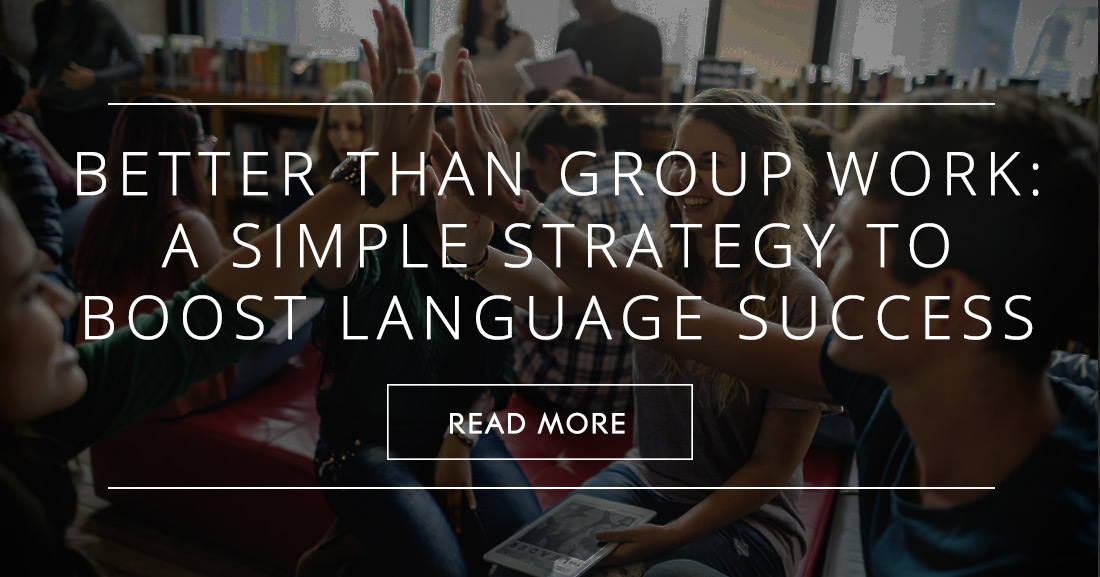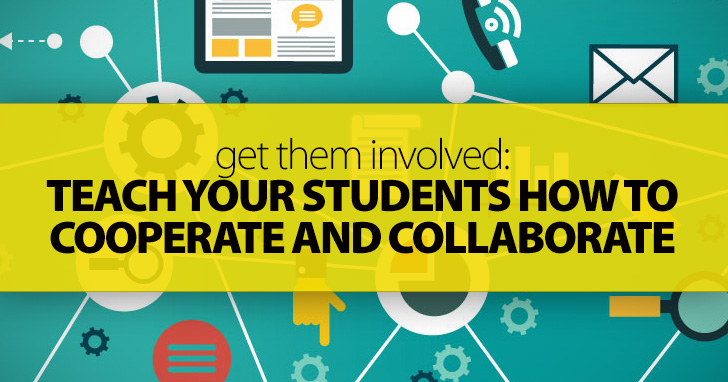Better than Group Work: One Simple Strategy that can Boost Language Success for Your EAL Students


It is one the first things kids learn to do in kindergarten and preschool, and it's no surprise. When children work together in small groups, they can share strengths and also develop their weaker skills. Also, they develop their interpersonal skills and learn to deal with conflict. When they cooperate and are guided by clear objectives, students participate in different activities that improve their understanding. In today's world where being a "team player" is often a key part of business success, teaching children to cooperate and collaborate from an early age is very useful and important. Take a look at some of the benefits of cooperation and collaboration in the ESL classroom.
Often cooperation and collaboration in learning is not easy to achieve. There are situations in which conflicts that arise obsticalize learning, particularly in situations where students must work together on a problem. As a result, cooperative and collaborative learning require teaching kids to work well with others by resolving these inevitable conflicts. That's why, in order to create an environment in which cooperative and collaborative learning can take place, three things are necessary. First, students need to feel safe, but also challenged. Second, groups need to be small enough that everyone can contribute. Third, the task students work together on must be clearly defined. There are a number of techniques and exercises that you can use. Among the most popular are:

It is one of the best known and most common exercises used. Students have the opportunity to reflect on the question and then practice sharing and receiving possible solutions. Since it is simple, teachers find it easy to use and adapt to a wide range of course material.
This is a great activity to use as an ice-breaker because by interviewing each other children learn about their fellow classmates and can share opinions, positions, or ideas. Students are paired and take turns asking each other questions that can either be provided by the teacher or created by them with supervision. After the interview they can introduce their partner and tell the other students what they know about them.
This is great for problems that are more complex. Here, students become experts in one of many parts of a problem. They first participate in a group exclusively focused on a single part of the problem. Later, groups are rearranged with a representative from each expert group who can now manage the whole problem because they have sufficient expertise.
Students are paired up and assigned a task. Peers give each other feedback during the completion of that activity. For instance, each student in the pair describes their topic ideas and outlines the structure of their work while their partner asks questions, and develops an outline based on what is described.
For any student, learning how to take notes is important. The reason is that poor note-taking leads to poor performance. A good way to exercise this is by having students summarize what they understood of a concept based on notes they have taken and by getting feedback from their partner. This gives students the opportunity to find gaps in their written records. The note-taking should be guided by questions so students realize what is important.
Graphic organizers are powerful tools that make information meaningful and less complex. In exercises that involve sequences, students can provide a visual representation of a series of events or actions. Students working together can be asked to organize information. They can even be asked how each sequence relates to another.
Helping students learn to cooperate and collaborate with one another can enable them to become actively and constructively involved in the lesson, to take control of their own learning, and to improve teamwork skills.